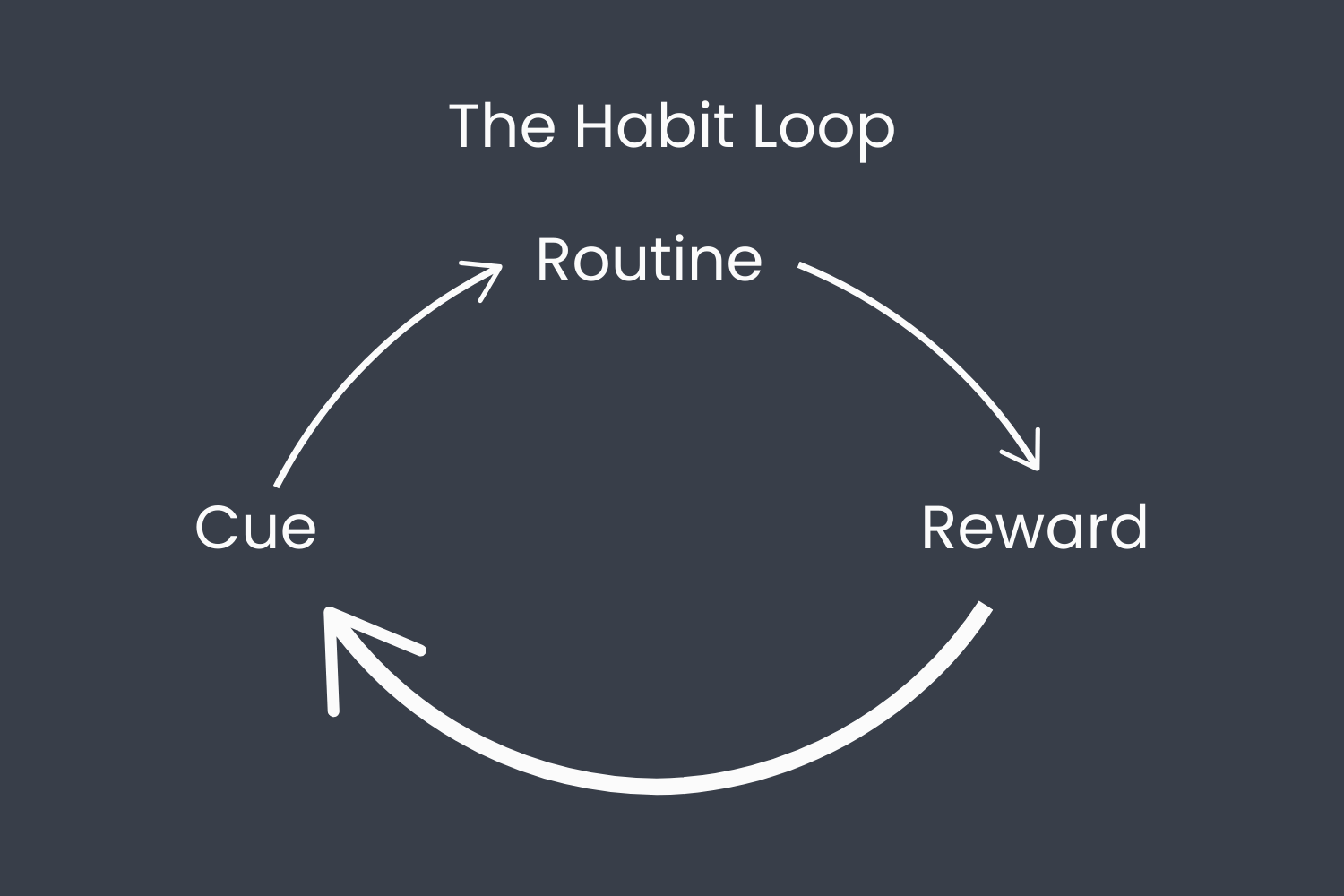Master Your Money Habits: Turn Your Routines Into Results
💡 Ever wonder why you keep swiping your card on things you didn’t really want or need—whether it’s a random Amazon order or takeout when you had food at home? It’s less about willpower and more about habits.
Habits are powerful. They operate on autopilot, influencing how you spend, save, and even handle stress—often without you realizing it. The good news? You can adjust your habits to work for you instead of against you.
Let’s break down how habits form and how you can use that knowledge to transform your money behaviors.
What Are Habit Cues?
Think about brushing your teeth. You probably don’t debate whether or not to do it each morning—you just do it automatically. Frankly, I would find it very challenging to NOT brush my teeth in the morning. That’s because it’s an ingrained habit, set off by a trigger (or cue).
Charles Duhigg’s book The Power of Habit explains this using the Habit Loop:
✔ Cue – The trigger that starts the habit
✔ Routine – The action or behavior itself
✔ Reward – The benefit your brain receives, reinforcing the habit
If you want to change a habit, keep the cue and reward the same, but change the routine.
My Dessert Habit: A Personal Example
I love dessert. Eating dessert is something I look forward to and truly enjoy. But I started noticing that every night when I sat down to watch TV, I craved dessert—even if I wasn’t hungry. It felt like something I needed to do, and like my evening was incomplete without it. I wanted to gain control over where and when I chose to eat dessert, and not have my habits control me. So, I decided to apply the concepts from The Power of Habit and map out my habit using The Habit Loop.
After some careful observation, I realized: my cue wasn’t hunger or time of day—it was sitting on the couch to watch TV. On nights when I didn’t watch TV—perhaps I was doing a puzzle instead—I didn’t feel the same urge to eat dessert. This awareness was a game-changer.
Here’s what my habit loop looked like:
📺 Cue: Sit on the couch to watch TV at 9 PM
🍪 Routine: Eat dessert
😌 Reward: Feel relaxed and decompress from the day
💡 Once I identified the cue, I could swap out the routine!
Here’s an example of how I could substitute the routine portion of my habit loop:
✔ Keep the same cue (watch TV at 9 PM)
✔ Swap the routine (drink tea or eat fruit instead of dessert)
✔ Maintain the reward (still feel relaxed)
I’ll be honest—I haven’t cracked the code 100% yet with my nighttime dessert habit, but simply being aware of the habit loop and what’s triggering it has helped me feel more in control.
How This Relates to Money Habits
Just like I automatically reached for dessert, many of us have financial habits that happen without thinking. But once you recognize them, you can start making small shifts that lead to big results. Let’s look at a common habit:
🍔 You want to eat out less frequently
Current Habit Loop:
📍 Cue: You’re hungry
🍟 Routine: You grab fast food because it’s quick and easy
🤤 Reward: You feel full and satisfied
New Habit Loop:
📍 Cue: You’re hungry
🥗 Routine: You eat a meal you prepped in advance
🤤 Reward: You feel full and you saved money!
💡 Financial Impact: If you cut out two fast food meals per week, saving $10 each time, that’s:
✔ $20 per week
✔ $80 per month
✔ $1,040 per year—money you could use to pay off debt or build savings!
How to Start Changing Your Habits Today
📝 Step 1: Identify one habit you want to change.
🔍 Step 2: Map out your cue, routine, and reward.
👀 Step 3: Spend a week observing your habit to confirm the cue is accurate.
🔄 Step 4: Swap out the routine while keeping the cue and reward the same.
⏳ Step 5: Be patient (I know, easier said than done!). Remember, changing a habit takes time. You can do it!
The Bottom Line: Use Your Habits to Your Advantage
Your habits aren’t inherently good or bad—they’re just patterns. But once you understand them, you can rewrite the script to make them work in your favor.
💡 What’s one habit you’d like to change? Drop a comment below to let me know!
